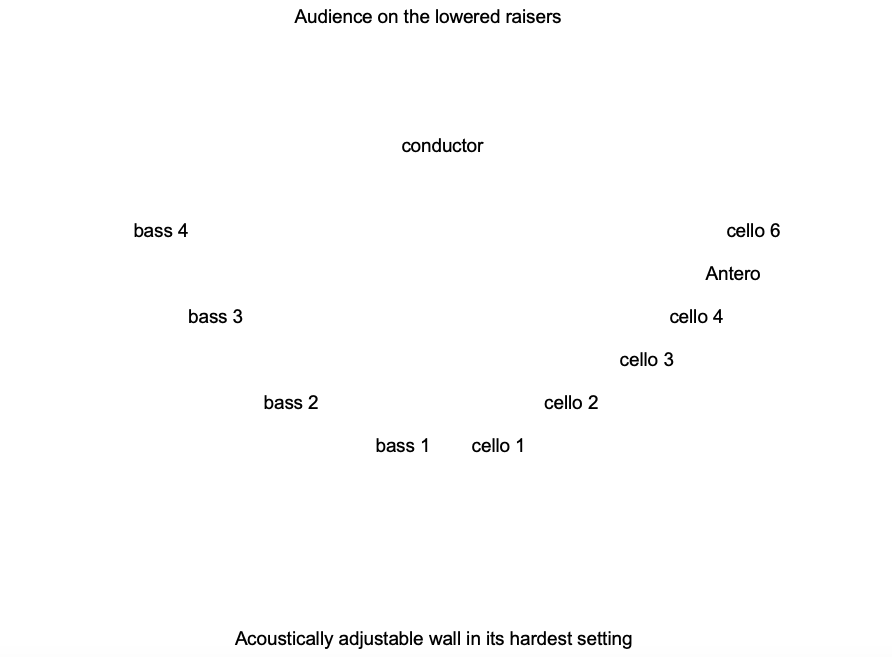Acoustics - Bassic Instinct
Acoustics
Having listened to a couple of chamber music concerts and orchestral rehearsals in the Rehearsal Hall Paavo, I had a fairly good idea of its acoustics and how it might suit the ensembles of my final doctoral concert. Despite the adjustable sound absorption and the elements imitating the acoustic feedback on the stage of the main concert hall of the Helsinki Music Centre the hall is not very pleasant for a full symphony orchestra. Quite understandably, the hall gets rather clogged up by a full orchestral fortissimo. It functions as a compensatory space enabling two symphony orchestras to work simultaneously in the Music Centre building. However, the hall seems to be rather satisfactory as a venue for chamber concerts. Its acoustic variability works best when there is enough volume left for reverberation, and no or only partial use of the risers.
I had no worries about the ring of the trio because it is, in a way sound-wise self-sufficient with its two large bowed instruments, and especially with the resonance resources of the harp. My main concern was naturally the large ensemble of Mussorgsky's Pictures, which, in spite of creating a big and resonant ensemble sound by itself, requires a certain amount of support with reverberation and a good sonority around it.
During the first rehearsal, the Mussorgsky ensemble was placed in a half circle to the wide-angle back corner of the hall. The idea was to use the corner wall reflections to enhance the ensemble sound and also to exploit the full length of the hall. The ensemble was in practice on one of the sections of the orchestra risers but I decided not to have them elevated because that would have consumed some of the total volume of the hall and therefore diminished the reverberation time. Besides, I had a suspicion that the riser structures would especially absorb the lowest frequencies. The acoustic wall was adjusted to its hardest and most reflective setting.
It soon became evident that the wooden panel structure of the walls is not solid and closed enough to provide useful reflections. In spite of the fact that we did not elevate the risers, it seemed that even when fully lowered the structure is not sufficiently firm and vibrates in sympathy with the bass sound and therefore absorbs bass energy (Guettler et al. 2012). Before the second rehearsal, I tested several positions in the hall with a single bass and we found out that it would be best to try and play completely off the risers. This left us only one possible position in the hall: the ensemble could just fit into the place before the acoustically adjustable entrance wall, facing the orchestra risers but barely off them. So the concert arrangement was set up in reverse order to the original design.
The original order of the instruments placed the first cello and the first double bass facing each other at the opposite ends of the half circle and the others according to the part order towards the middle. However, in this formation the ensemble sound appeared to diffuse too much since the higher part instruments were too far from each other and the lowest became muddled up in the middle. We therefore reversed the order of the instruments starting from the middle of the arc, with the lowest bass and lowest cello now at the opposite ends:

Harp sounds really big here! The bass resonance is better here in the new position but it feel that also all the scratchy noises of our bows are amplified too – Hope they don't carry too much to the audience.
Make sure the endpins are not on the riser system! How close to each other can we sit?
Again I hear too much the friction of the bow at first – it must be the surface material of the acoustic wall behind - The power seems good though.
